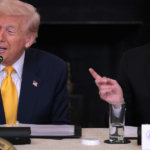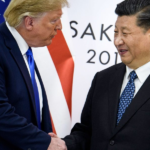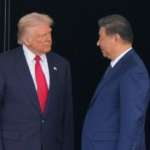The majority determined that members of the Federal Reserve’s Board of Governors and other members of the Federal Open Markets Committee were off limits to Trump. The ruling states the Federal Reserve is a “uniquely structured, quasi-private entity that follows in the distinct historical tradition of the First and Second Banks of the United States.”
Even without the Supreme Court specifically carving out the Fed in its ruling, Trump might have kept Powell around because the chairman could be a convenient fall guy if Trump’s tariff policy threw the country into a recession, Robert R. Johnson, a finance professor at Creighton University, told Fortune this month.
“My belief is that Trump’s criticism of Fed Chair Jerome Powell is an example of Trump setting up the scenario of ‘heads I win, tails you lose,’” Johnson said. “That is, according to Trump, if the economy performs well his tariff policies and his general handling of the economy will be the reason. If the economy suffers a recession, then it is Powell’s fault.”
The Thursday ruling granted a stay that will allow Trump’s firings to stand while the case works its way through lower courts. Therefore, at least temporarily, Trump can fire officials without cause, which breaks with 90 years of historical precedent established by a 1935 case known as Humphrey’s Executor v. United States.
Justice Elena Kagan, joined by Justices Sonia Sotomayor and Ketanji Brown Jackson, issued a sharp dissent to the majority’s ruling.
Kagan wrote that the two boards at issue in the case are similar to the Federal Communications Commission and the Federal Trade Commission—and the Fed.
“Congress created them all, though at different times, out of one basic vision,” Kagan wrote. “It thought that in certain spheres of government, a group of knowledgeable people from both parties—none of whom a President could remove without cause—would make decisions likely to advance the long-term public good.”
What Trump has done is “take the law into his own hands,” wrote Kagan. No president since the 1950s has tried to just remove an officer from an independent agency and the majority’s ruling has effectively “bless[ed] those deeds.” Under the law, Trump has to have good cause to fire Wilcox and Harris, and he admitted he didn’t have it, Kagan wrote.
Therefore, granting Trump’s order for a stay “is nothing short of extraordinary,” she wrote.
“What matters, in other words, is not that Wilcox and Harris would love to keep serving in their nifty jobs,” the dissent states. “What matters instead is that Congress provided for them to serve their full terms, protected from a President’s desire to substitute his political allies.”
She also criticized her colleagues for exempting the Fed—likely a decision meant to keep the stock and bond markets from tanking
“If the idea is to reassure the markets, a simpler—and more judicial—approach would have been to deny the President’s application for a stay on the continued authority of Humphrey’s,” wrote Kagan.









